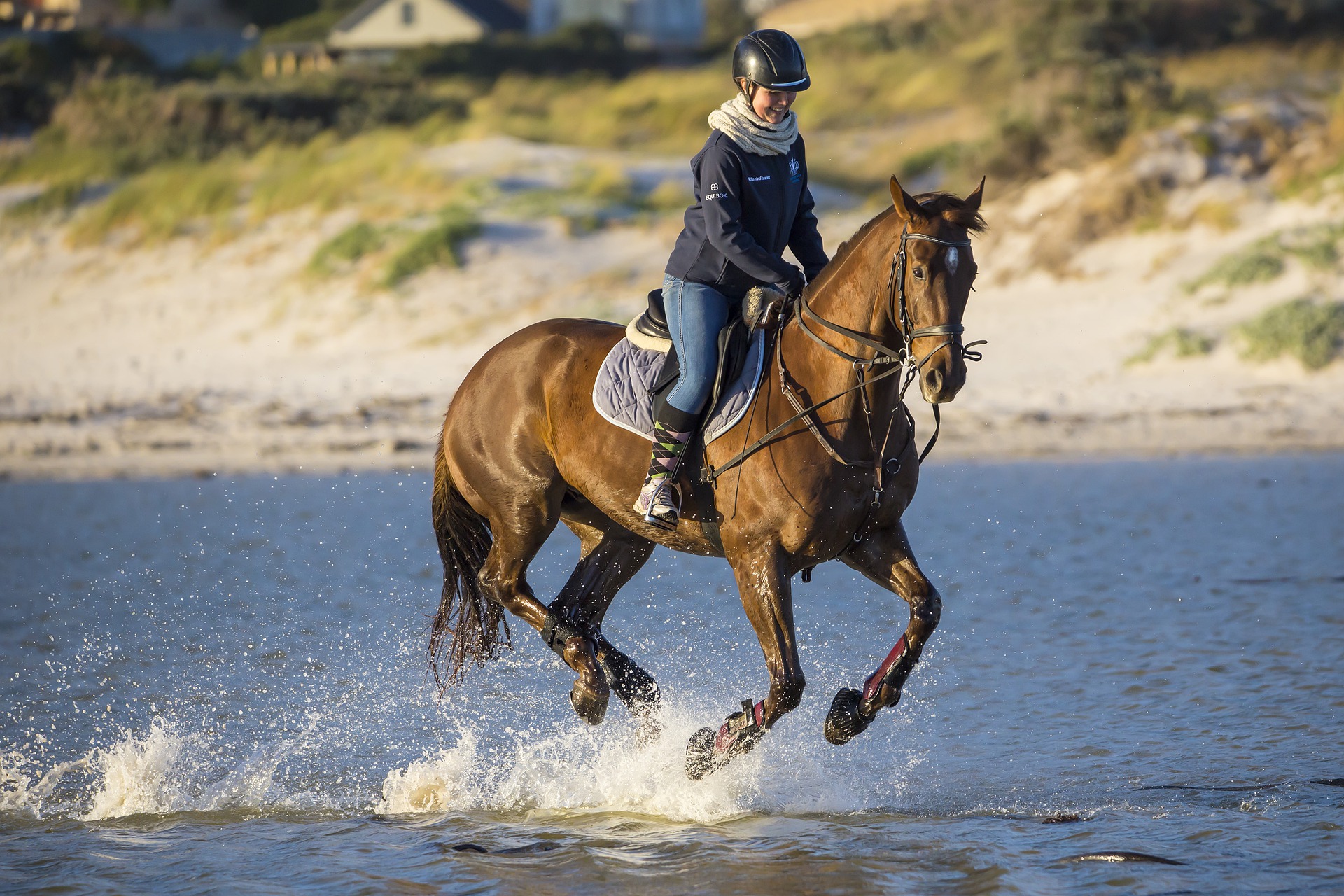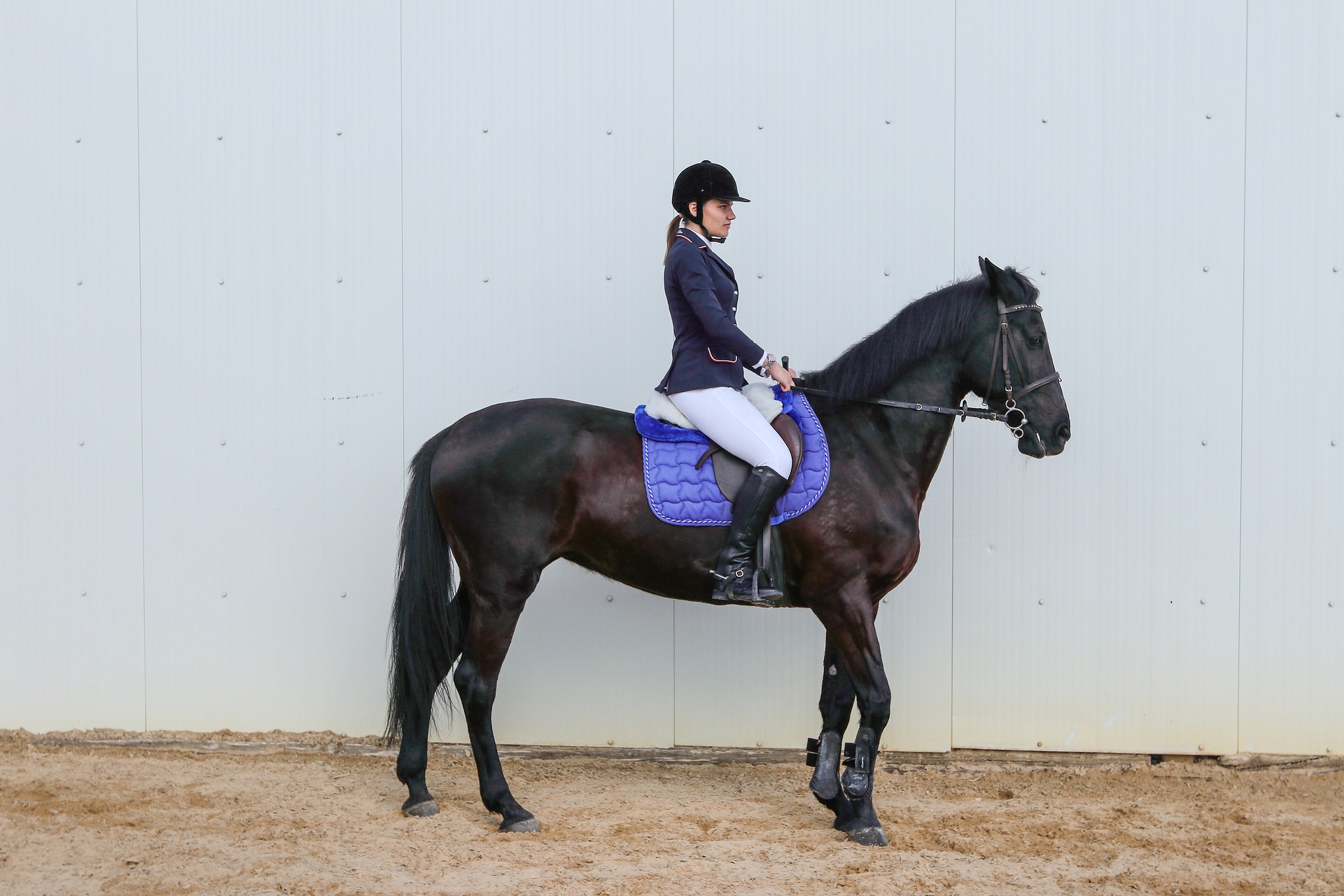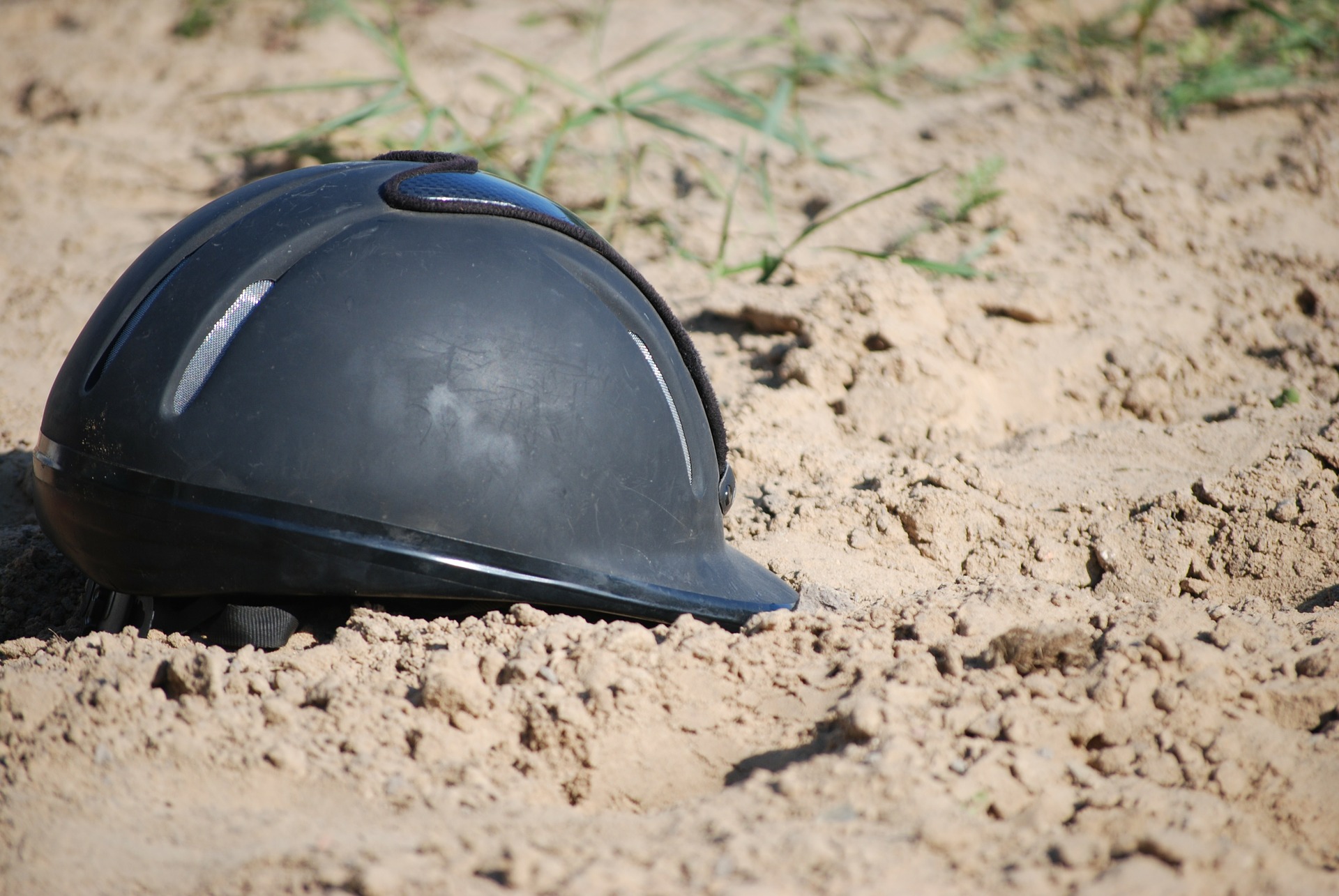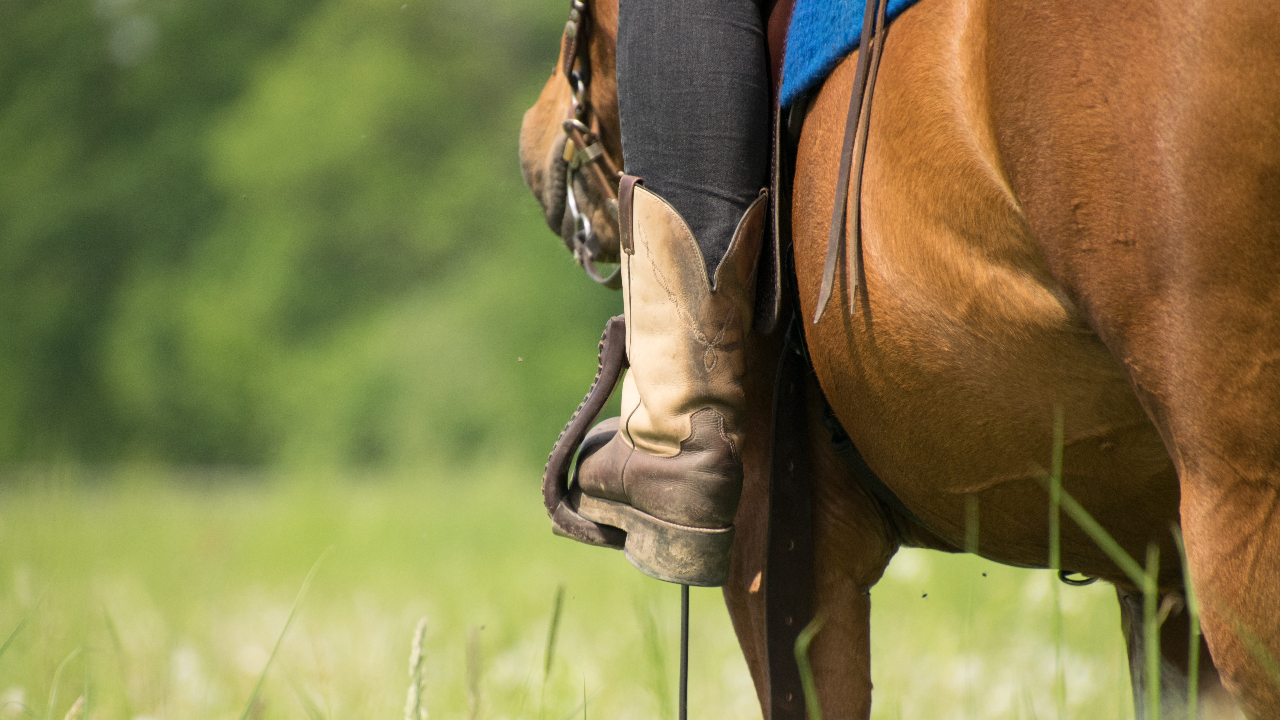Handling and riding horses can be a risky business so it's best to take full advantage of all the available protective equipment. Wearing a helmet when riding is the best way to reduce the risk of fatal head injuries and helmets also offer protection when working with horses from the ground too. In this guide, we're going to take a look at the different types of riding helmets and what you need to consider before buying one. Read on to discover everything you need to know about choosing the best horse riding helmets.
Different Types of Helmets for Horse Riders

Traditionally horse riding helmets would be found in two distinctive styles but these days you'll find a range of modern designs on the market. So you can get a clearer idea about the different types of helmets, we'll take a look at all the different ones below.
1. Velvet Hat
The velvet hat is the most typical type of English riding helmets, with an outer made of black velvet or velvet-like material. These helmets have a built-in rigid peak and because of their elegant look, they're used a lot in showing. Velvet hats have evolved over time and can be found with a more modern appearance and extra comfort features. They are the preferred choice of helmet to use in show jumping, dressage and hunting. They can also be used for general use including hacking and schooling.
2. Skull Cap
Skull caps are plainer in appearance, don't have a built-in peak and are often used with a jockey silk cover. These covers have a soft peak and come in a range of different patterns and designs. Skull caps are the preferred choice for use in horse racing, cross country and eventing.
3. Modern Designs
Modern horse riding helmets come in different designs that combine the features of both traditional helmets. They'll often include ventilation holes and removable linings and some feature removable visors too. Modern designed helmets also look a lot more elegant and technological advancements mean that they're much sleeker in design.
How Do Riding Helmets Work?
A helmet for horseback riding is designed to sit securely on the riders' head, protecting the skull from any impact that could occur from a kick or fall. A good riding helmet will take the bulk of the impact away from the head. They do this by using a system of three layers.
The outer layer is made up of a hard durable material, it's quite thin and also known as the shell. This is the first part of the helmet that takes an impact. The second layer is the thickest layer and absorbs most of the impact. It's usually made up of a styrofoam type material. The last layer in a helmet is the inner layer which gives the helmet a comfortable grip around the riders' head. It's usually made of a light breathable fabric.
Equestrian Helmets - Safety Certification and the Law

Because a horse riding helmet is considered to be a piece of safety equipment, then it has to go through a rigorous testing process for it to be approved. Below we'll take a look at the best safety certificates and the laws surrounding riding helmets.
Safety Certificates
Probably the most important thing to be aware of when you're choosing a helmet is the approved safety standards and certifications. Not all helmets on the market are certified so it's important to check. A hat without certification potentially won't protect you in the event of an accident. Some helmets on the other hand will have several different certificates.
The basic certificates to look out for are SEI (Safety Equipment Institute) and ASTM (American Society for Testing and Materials). A helmet with several certificates offers the best levels of protection. Never use motorbike or cycling helmets for horse riding, they don't offer enough protection.
The Law
In some situations, you may be required by the law to wear a helmet when riding. This is especially relevant when it comes to events and showing. The United States Equestrian Federation (USEF) require competitors to wear an approved riding helmet. It's always best to check with your association regarding specific rules and safety requirements regarding your horse riding helmet. In some states, the laws require all riders to wear a helmet when riding in public places and usually a helmet is required by law for riders under 14 years old.
Horse Riding Helmet Size and Fit Guide
Even if your helmet has the highest levels of safety certification, it won't offer maximum protection if it doesn't fit correctly. Take a look at our size and fit guide below to get the best idea of how a helmet should fit.
Sizing
Finding the best sized riding helmet isn't always easy. Some brands will sell their hats in inches, some will sell in centimeters and others will sell in universal measures of small, medium or large. The best way to find your size is to measure your head and then refer to the individual manufacturers' size charts.
When it comes to measuring for your hat, you'll need a soft tape measure to take your head measurement. It's best to start in the center of your forehead, around one finger's distance above the eyebrows. Wind the tape around your head, just missing the top of the ears while incorporating the widest point of the back of your head. When the tape comes back to the starting point, this is your head measurement. For an accurate reading, it's a good idea to measure your head several times.
Fitting
When you're trying out a new helmet to see if it fits then you should wear your hair how it's going to be when you're riding. Tie it back in a ponytail for example or put on your riding headband. The hat should feel “locked” on to your head with a firm even pressure all round. It shouldn't slip around with the strap undone, and the brim shouldn't block your view. A hat that fits well shouldn't touch your eyebrows or sit too far up the forehead, it should sit somewhere in-between the two points.
Fitting Tips
A riding helmet will break in overtime in the same way that a pair of shoes does. When you're trying a helmet on, keep it on for five minutes to get a good feel for it. If you're feeling pressure at the sides then it may be that you have a round head. If this is the case then you should look out for brands that offer helmets in round sizes.
Notes on Fitting a Kid's Horseback Riding Helmet
Often when you're buying children's clothing it can be tempting to buy a size up so that they can grow into them. This may be fine in most cases of kids clothing but not when it comes to youth horse riding helmets. A helmet that doesn't fit properly won't protect a youth in case of an accident. You can't always depend on kids to communicate the fit properly either, especially when it comes to fitting a toddler, so you must assess the fit yourself.
Replacing an Old Horse Riding Helmet
If your helmet has sustained a large impact from a fall or drop on the floor then the chances are, it will need to be replaced. A hard impact will break the inner core meaning that the hat will no longer be effective at protecting your head against head injury. If a helmet has had several small impacts or is visibly broken in any way then it may also need to be replaced for the same reason.
How Often Should I Replace a Helmet?
A helmet that hasn't had any impacts should be replaced as standard every three to five years. The materials used to make hats will slowly deteriorate over time. You can't really put a price on safety so it's always worth investing a high quality, high safety certified hat. Never buy a second-hand helmet because you never know if it has sustained a high impact.
How To Choose The Best Helmet for Horse Riding

A horse riding helmet is a piece of vital safety equipment so it's important that you choose the right one. Below we've outlined the most important things to consider when you're looking for new equine riding helmets.
1. Purpose
If you're looking for a general-purpose hat then, providing it is certified, you can choose one freely according to personal style. If you're competing in specific events then it's best to choose a helmet that is approved for the purpose.
2. Safety
If you're taking part in a riding activity where the risk of sustaining high impact is high, such as cross country, then always opt for the highest levels of safety certification when you're choosing a helmet. If you're using a helmet as a precaution when you're doing low-risk riding or groundwork then a helmet with minimum safety certification will offer sufficient protection.
3. Color
Riding helmets are available in a huge range of colors and you can choose a design that suits your style. If you're competing in team events then choose matching colored helmets for a professional, distinctive look. If you're competing in dressage then choose a hat that has a dark, elegant design.
4. Brand and Budget
Just because a helmet is cheap doesn't mean that it's less safe. It's the safety certificates that determine the level of safety in a helmet, not the price. If you're looking for a high-end helmet over 100 dollars then the best riding brands to choose are One K or Charles Owen. If you're on more of a budget then the same levels of safety can be found in brands such as Troxel and Ovation with prices starting at 50 dollars.
5. Size
When you're buying a riding helmet online make sure that the seller has a good returns policy in case the hat doesn't fit. Remember that different manufacturers use different sizes. What may be a perfect size fit with one brand may not be so good with another.
6. Special Features
If you want to keep your helmet feeling clean and fresh then look for one with a removable, washable liner. If you're riding a lot in hot weather then choose a helmet with good ventilation features. However, if you're riding in cold weather, look for fewer ventilation holes to help keep you warm. For extra protection against the rain or sun then choose a helmet with a wide peak that will act as a visor.
You may also wish to accessorise with a camera for your horse riding helmet.
Our Top 7 Horse Riding Helmet Reviews
To help you find the perfect horseback riding helmet, we've reviewed seven of our favorites below to get you started.
1. Troxel Liberty Horseback Riding Helmet
This is a popular all-purpose helmet from brand leaders, Troxel. As well as being durable and lightweight, it also has 6 mesh-covered vents that'll be sure to keep your head cool and comfortable. The inner lining is made with special Air-Channel Technology and can be removed easily for washing. For extra comfort and a precise fit, the Liberty has an adjustable dial fit system and is the best riding helmet for schooling and general purpose riding. This stylish helmet is safety certified and is available in a range of several different colors.
2. Ovation Equestrian Deluxe Schooler Helmet
This is a well ventilated, low profile, women's schooling helmet from Ovation and it's a bestseller on the marketplace. As well as being great for general riding, it also looks elegant in the show ring, making it the best dressage helmet. Ovation helmets are safety approved and are available in a huge range of different colors, patterns and finishes. They also come with a removable, washable headlining as well as a removable visor. For the ultimate in comfort and precision fitting, the schooler helmet features a dial adjust system and comes in a large range of sizes.
3. Troxel Spirit Horseback Riding Helmet
The Spirit from Troxel is a bestselling horseback riding hat that's proven to keep you safe and comfortable when you ride. It's approved to full safety regulations and it gives the rider full coverage with a low profile design. The special Flexi visor on this helmet won't shatter upon impact and the ventilation system promotes optimum airflow. You'll enjoy a precision fit with the Flip-Fold removable lining together with the adjustable dial fit system. The Troxel Spirit helmet is available in a huge ranger of sizes and eye-catching designs and is the best riding helmet for Western horseback riding.
4. Ovation Equestrian Protege Riding Helmet
The Protege horseback riding helmets from Ovation are one of the lightest and most breathable helmets on the market, making them the best ones for wearing in a hot climate. They have a sleek, low profile, design with an extended back shell that offers extra protection. For precision fitting, the helmets have an adjustable dial fit system and the liner is easily removed and washable. The multiple vents in Protege helmets are covered in a fine mesh which keeps out dust and debris while letting your head breathe. These horseback riding helmets are fully approved to safety regulations and they're available in a range of elegant colors.
5. Troxel Rebel Horseback Riding Helmet
The Rebel riding helmet from Troxel is sure to turn heads with it's unique, vibrant design. Like with all Troxel helmets, the Rebel is fully safety approved which guarantees high levels of protection. Comfort is a large feature of this helmet, it has an adjustable dial fit system as well as a unique SureFit Pro System that molds to your head over time. This lightweight, breathable helmet comes with a removable, washable lining, tough, Duratec finish and it's available in several eye-catching designs. This is the best low profile helmet for Western riding.
6. One K Women's Defender Helmet
This is a high-end horseback riding helmet from One K that offers the most advanced helmet technology and safety features. It has an advanced ABS composite outer shell as well as a moisture-wicking, antimicrobial, removable liner. This means that not only does it offer the ultimate in protection, but it's designed with comfort in mind too.
This helmet is well ventilated with sturdy, stainless steel mesh vents and it has a comfortable padded harness with a synthetic suede covering. If you're looking for a safe, professional helmet then this is the one to invest in and it's the best equestrian helmet for eventing.
7. Charles Owen Ayr8 Riding Helmet
Charles Owen are leaders in the market when it comes to producing fully certified, high-quality horse riding helmets. The Ayr8 riding helmet from Charles Owen is one of the most lightweight and low profile helmets on the market. It's sleek, elegant design, with microfiber suede side panels, makes it perfect for the show ring and it will be sure to keep your head cool under pressure with 12 mesh vents. The comfortable leather-look harness and super soft interior headband will give you a perfect, comfortable fit making this is the best horseback riding helmet for oval head riders.
Conclusion
When it comes to choosing a riding helmet that's comfortable, stylish and protective, we highly recommend the Troxel Spirit. With such a huge range of sizes, styles and designs, you'll be sure to find a perfect match. This is a highly rated helmet that's definitely worth investing in.
With so many different designs on the market, you'll be spoilt for choice when it comes to choosing a helmet. The important thing is that you make sure that the helmet you choose has safety certificates and that it fits your head well. By following the advice in this guide, you'll be sure to choose the best horse riding helmets for your needs.











